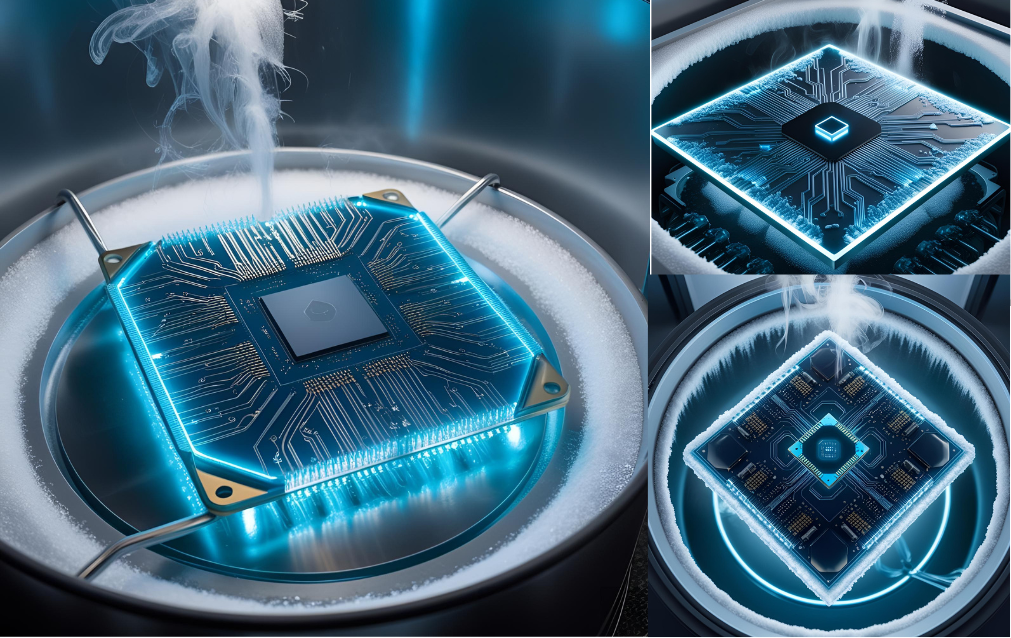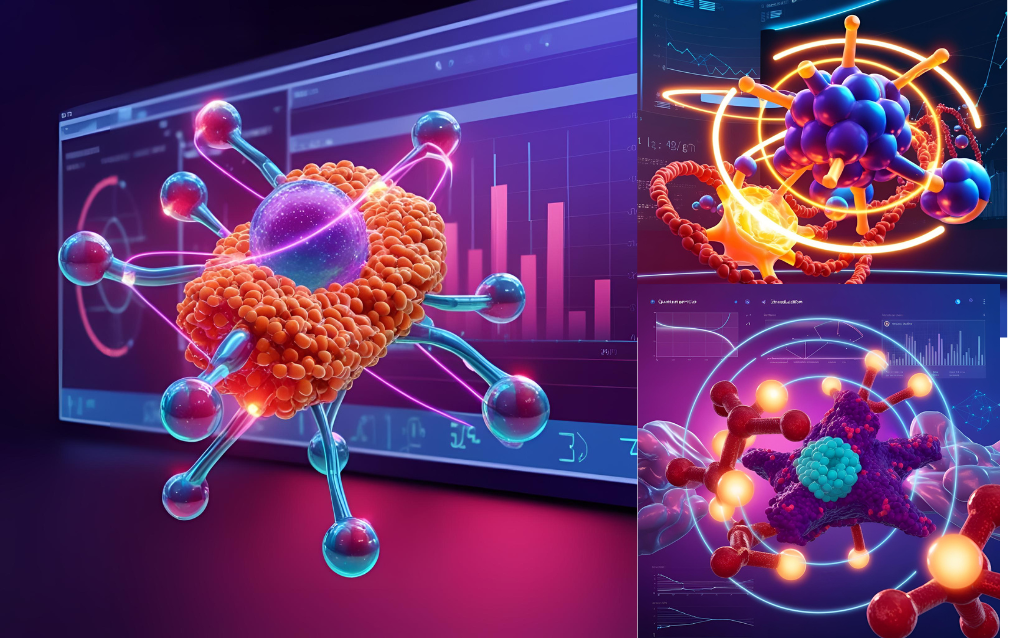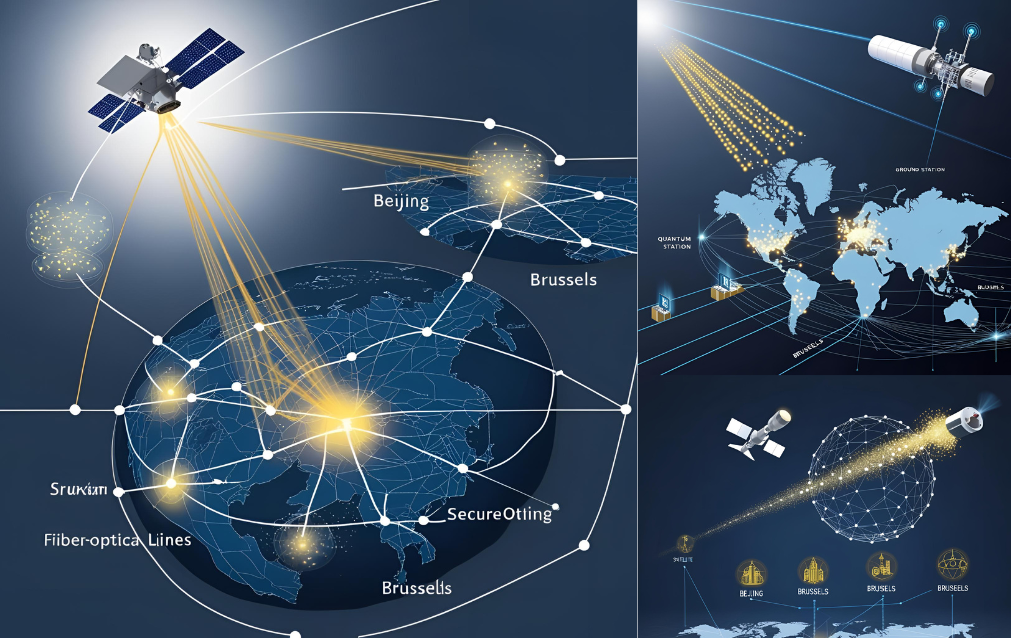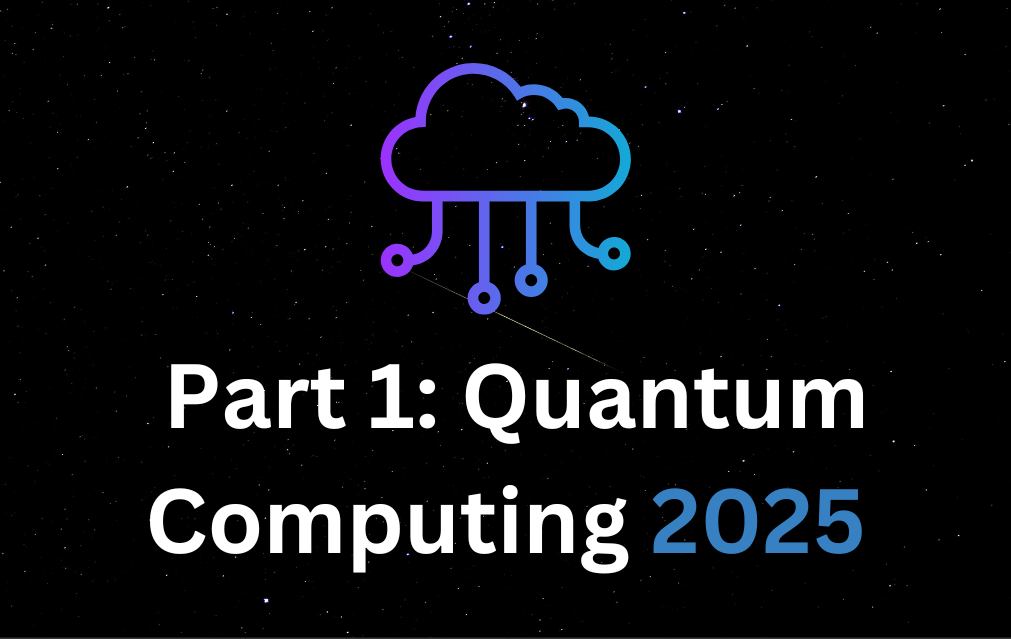Quantum computing has long been the stuff of science fiction a tantalizing promise of computational power so vast it could unravel the mysteries of the universe. For decades, it lingered in the realm of theory, confined to labs and whiteboards. But as we stand in April 2025, that frontier is shifting. Quantum computing is stepping out of the abstract and into the tangible, with practical applications emerging in drug discovery, cryptography, and climate modeling. This isn’t the quantum revolution in its fullest form not yet but it’s the dawn of a new era where theory meets utility. Fueled by breakthroughs in hardware, algorithms, and hybrid systems, 2025 marks a pivotal moment where quantum computing begins to deliver measurable impact. Let’s explore how this technology is reshaping these critical fields and what near-term advancements lie ahead.
The Quantum Leap: From Theory to Reality
At its core, quantum computing leverages the strange principles of quantum mechanics superposition, entanglement, and interference—to process information in ways classical computers can’t. Where traditional bits represent either a 0 or a 1, quantum bits (qubits) can exist in multiple states simultaneously, exponentially increasing computational potential. But harnessing this power has been a Herculean task. Qubits are notoriously fragile, prone to decoherence from even the slightest environmental disturbance, and require temperatures colder than outer space to function. For years, these hurdles kept quantum computing in the experimental phase.
By 2025, however, the landscape has shifted. Advances in error correction, qubit scalability, and hybrid quantum-classical systems have pushed the technology into what’s known as the Noisy Intermediate-Scale Quantum (NISQ) era. These machines, while not yet fault-tolerant, are powerful enough to tackle specific, high-value problems. Companies like IBM, Google, and startups like Rigetti are driving this transition, with processors now boasting hundreds to thousands of qubits. The result? Real-world applications are no longer a distant dream—they’re here, and they’re growing.

Description Of The Image: A high-resolution, futuristic image of a quantum processor, showcasing its intricate superconducting circuits bathed in a faint blue glow. The chip is suspended in a cryogenic chamber, with frost forming around the edges and faint wisps of vapor rising, emphasizing the ultra-cold environment (near absolute zero) required for operation. The perspective is slightly angled to highlight the complexity and delicacy of the hardware.
Drug Discovery: A Quantum Cure on the Horizon
One of the most promising applications of quantum computing in 2025 is in drug discovery. Developing new pharmaceuticals is a slow, costly process often taking a decade and billions of dollars to bring a single drug to market. The bottleneck lies in simulating molecular interactions. Classical computers struggle to model the quantum behavior of large molecules, relying on approximations that limit accuracy and speed. Quantum computers, by contrast, are uniquely suited to this task, as they operate on the same quantum principles as the molecules themselves.
Imagine a world where a quantum computer can simulate how a drug binds to a protein target in hours rather than months. By 2025, this vision is taking shape. Companies like Qubit Pharmaceuticals and Merck are pioneering quantum-assisted platforms that slash discovery timelines. For instance, quantum algorithms can optimize protein-ligand interactions or predict protein folding a problem so complex it once took supercomputers years to crack, as seen with DeepMind’s AlphaFold. Now, quantum systems are refining these predictions further, identifying drug candidates with higher precision.
The near-term outlook is electrifying. Improved qubit stability and error correction will allow simulations of larger biomolecules, potentially unlocking treatments for diseases like Alzheimer’s or cancer. Hybrid workflows, where quantum computers handle quantum chemistry while classical systems manage trial logistics, are also gaining traction, promising cost reductions that could democratize drug development. By the end of 2025, expect to see at least one quantum-derived compound entering clinical trials a milestone that could redefine medicine.

Description Of The Image: A vibrant, digital illustration of a quantum simulation in action. The image shows a 3D molecular structure (e.g., a protein) with glowing quantum particles orbiting around it, symbolizing qubits at work. The background features a sleek interface with graphs and data visualizations, suggesting real-time analysis. Colors like deep purple and electric blue dominate, evoking a sense of cutting-edge science.
Cryptography: Securing the Quantum Age
Quantum computing’s rise isn’t without its paradoxes. While it offers unprecedented opportunities, it also threatens to upend one of the pillars of modern security: cryptography. Algorithms like Shor’s, which a sufficiently powerful quantum computer could use to factor large numbers exponentially faster than classical systems, could break widely used encryption methods such as RSA. With data breaches already costing trillions annually, the stakes couldn’t be higher.
By 2025, this dual-edged sword will be driving a cryptographic renaissance. On one front, the race is on to develop post-quantum cryptography (PQC) encryption methods resilient to quantum attacks. The U.S. National Institute of Standards and Technology (NIST) has spent years vetting PQC algorithms, and 2025 marks a key adoption phase, with standards like CRYSTALS-Kyber and Dilithium rolling out. Governments and industries are beginning the transition, targeting 2035 for full implementation, but 2025 will see early movers think finance and defense deploying these safeguards.
On the flip side, quantum computing is bolstering security through quantum key distribution (QKD). Using the principles of quantum entanglement, QKD creates encryption keys that are theoretically unbreakable any attempt to intercept them alters their state, alerting the parties involved. China’s Micius satellite and Europe’s Quantum Internet Alliance are expanding QKD networks, with practical deployments expected in high-stakes sectors by year-end. The future of cryptography in 2025 is a tale of adaptation and innovation, balancing quantum threats with quantum solutions.

Description Of The Image: A sleek, sci-fi-inspired depiction of a QKD network. The image shows a satellite beaming quantum particles (represented as glowing dots) to ground stations connected by fiber-optic lines. A map-like overlay highlights key cities (e.g., Beijing, Brussels) linked by this secure network, with a subtle digital lock symbol reinforcing the theme of unbreakable encryption.
Climate Modeling: Predicting a Sustainable Future
As climate change accelerates, the need for precise, actionable models has never been greater. Traditional supercomputers, while powerful, hit limits when simulating the intricate interplay of atmospheric chemistry, ocean currents, and carbon cycles. Enter quantum computing. By 2025, its ability to process vast datasets and optimize complex systems is enhancing our understanding of the planet and our ability to protect it.
Quantum algorithms like the variational quantum eigensolver (VQE) and quantum Monte Carlo methods are refining climate simulations. These tools can model molecular interactions in the atmosphere with greater fidelity, improving predictions of extreme weather events like hurricanes or droughts. For example, a quantum-enhanced model might pinpoint the tipping point of Arctic ice melt with weeks’ more lead time than classical systems, giving communities precious preparation windows.
Beyond prediction, quantum computing is tackling sustainability head-on. By simulating new materials for carbon capture think catalysts that trap CO2 more efficiently quantum systems could unlock greener technologies. In 2025, expect breakthroughs in catalyst design, with pilot projects testing quantum-derived materials in industrial settings. While full-scale climate solutions remain years away, these early wins signal a quantum boost to environmental science.

Description Of The Image: A dynamic, panoramic image of a quantum climate model. The foreground features a swirling Earth globe with data points and heatmaps overlaying continents, symbolizing weather patterns. In the background, a quantum processor hums, connected by glowing lines to the globe, suggesting real-time computation. The color palette blends earthy greens and blues with tech-inspired silvers.
The Road Ahead: Breakthroughs in 2025
What does 2025 hold for quantum computing? While we’re not yet at the era of fault-tolerant, universal quantum machines, the near term is brimming with promise. Here are the key breakthroughs to watch:
- Error Correction Takes Hold: Advances like Google’s Willow chip and IBM’s logical qubit designs are reducing noise, making quantum systems more reliable. By year-end, expect processors with error rates low enough for practical tasks.
- Qubit Scaling Accelerates: IBM’s roadmap targets 2,000-qubit systems, while startups push modular designs. More qubits mean more power, bringing complex applications within reach.
- Industry Adoption Grows: From Goldman Sachs optimizing portfolios to Volkswagen streamlining logistics, hybrid quantum-classical systems will deliver ROI, spurring wider uptake.
- Cloud Access Expands: Platforms like AWS Braket and Microsoft Azure Quantum are lowering barriers, letting researchers and firms experiment without owning hardware.
Yet challenges persist. Qubit’s fragility, high costs, and energy demand temper expectations. Some, like Nvidia’s Jensen Huang, argue practical quantum computing is decades away. Others see 2025 as a tipping point for niche uses. The truth lies in the middle: this year won’t flood the world with quantum PCs, but it will cement the technology’s role in solving humanity’s toughest problems.

Description Of The Image: A wide-angle shot of a futuristic quantum computing lab. Scientists in sleek white coats work at holographic interfaces, while a massive quantum processor sits center-stage, encased in a transparent cryogenic chamber emitting a soft glow. The room is bathed in cool, modern lighting, with data streams projected on walls, evoking a blend of innovation and precision.
Conclusion: A Frontier Unfolding
Quantum computing in 2025 isn’t the endgame it’s the beginning. Drug discovery is speeding up, cryptography is evolving, and climate modeling is gaining clarity, all thanks to a technology once confined to theoretical papers. The breakthroughs of this year’s error correction, scalability, and real-world adoption lay the groundwork for a future where quantum systems tackle challenges beyond our current imagination. We’re not there yet, but the frontier is closer than ever. As qubits hum in their icy chambers, 2025 stands as a testament to human ingenuity and a preview of the quantum age to come.
Note: All Of Our Articles Are Written By Artificial Intelligence And Reviewed By Researchers.
